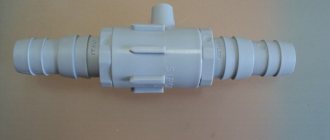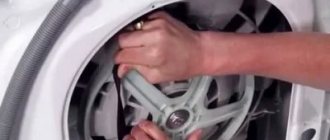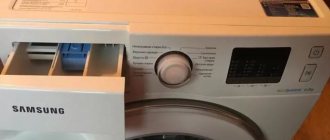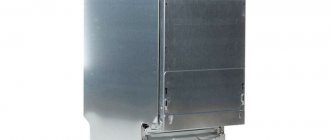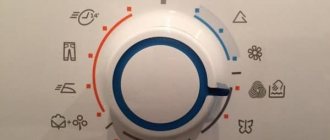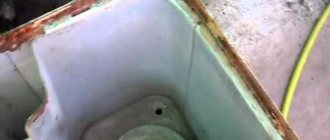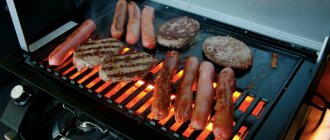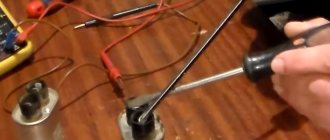Operating principle of an industrial dough mixer
Each dough mixer contains three elements:
- drive mechanism;
- deja;
- kneading tool.
Kneading tools vary in type and mixing principle. However, he has one goal - to knead even the toughest dough until smooth.
The bowl itself can be movable or not, and also have several methods of attachment to the dough mixer (rollable, stationary, removable).
Most dough mixers operate on the planetary principle - when the kneading tool rotates not only around its own axis, but also along the axis of the bowl. This ensures high-quality and fast mixing.
The best dough sheeters
Equipment for preparing dough and confectionery components
Category: Manufacturing equipment
Equipment for performing technological operations in the preparation of raw materials for the production of flour confectionery products is distinguished by a wide variety of designs and operating principles.
Screening equipment
used to separate impurities from raw materials. The working parts of these machines are systems of moving or fixed sieves.
Movable sieves can perform reciprocating, rotating and vibrating motion. The reciprocating motion of the screens in a horizontal or inclined plane is carried out by crank-and-rod eccentric or self-balancing mechanisms.
Machines with flat and drum sieves are used to sift flour and sugar.
All sifter mechanisms are mounted on the frame. The body is mounted on elastic supports. A flat horizontal frame with a sieve is inserted into it. The body receives reciprocating motion in the horizontal plane from two cranks through two connecting rods.
Raw materials (flour or sugar) are loaded through the receiving openings, the sifted product is removed through the outlet channel. Sifting occurs with the relative movement of particles along the surface of the sieve.
In Fig. The design diagram of a sifter with drum sieves is shown. This type of sifter is made in the form of a pentagonal pyramidal sieve drum, reinforced with spokes on a horizontal shaft located in rolling bearings.
Rice. Schematic diagram of a sifter with drum sieves: 1,2-stars; 3 — rolling bearing; 4 — inlet; 5 - short auger; b - shaft; 7 — channel for derailment; 8 - drum; 9 — body; 10 - spoke; 11 — shield; 12 - magnet; 13 — discharge auger; 14 - outlet
The edges of the drum are removable frames on which the sieves are stretched. The frames are installed and secured to the drum frame using wing bolts. The shaft and discharge auger are driven by an electric motor through a worm gearbox and chain drives.
The product enters through the inlet and is moved by a short screw into the slowly rotating drum. The sifted product is cut into two streams by shields. To separate ferroimpurities, it passes through magnets, the lifting force of which should not be less than 12 kg, then enters the discharge screw and is sent through the outlet to production.
The type of sifter based on the vibrating movement of the sieve is the small-sized machine MPMV-300. Its design includes a housing, a sieve, a loading hopper and an electric motor with unbalances. The body is made in the form of a cylinder, divided into two parts by a horizontal partition. The sieve has a ring shape. The loading hopper is installed directly under the sieve.
The housing, sieve and electric motor are mounted on a spring suspension.
When the electric motor is turned on, the weights installed on it create vibrations of the screen in the horizontal and vertical plane. As a result of this action, the sieve performs complex spatial oscillations, ensuring the passage of flour through it and its further advancement to the unloading device.
Along with domestically produced sifters, small-sized machines from foreign companies (Germany, Italy, Sweden, etc.) have found widespread use.
Dough mixing machines
According to the principle of operation, they are divided into machines of periodic and continuous action, and according to design features - into blade, propeller, turbine and rotary.
The working body of batch dough mixing machines has horizontal, vertical or complex movement.
In Fig. A schematic diagram of the design of a dough mixing machine with a horizontal kneading shaft is shown.
Rice. Structural diagram of a dough mixing machine with a horizontal kneading shaft: 1 - jacket; 2 - insulation; 3 - capacity; 4 — folding hatch; 5 — filter pipe; 6,7 — loading pipes; 8 - fixed cover; 9 — hinge; 10 - rod; 11, 25 — gearboxes; 12, 14 — electric motors; 13 — V-belt drive; 15 — kneading blade; 16 - kneading shaft; 17, 21 — bearing housings; 18 — rack; 19 — chain drive; 20 - bed; 22 — intermediate shaft; 23 - coupling; 24 - double-sided output shaft of the gearbox
The machine consists of the following main components: a frame, a container with a kneading shaft; cover interlocked with the starting device; container rotation mechanism; drive.
The container contains a horizontal shaft with kneading blades. The container is equipped with a water jacket, which allows heating or cooling the inner walls of the container, depending on the type of dough and the rotation speed of the kneading blades shaft. The outside of the shirt is equipped with thermal insulation. The kneading blades are mounted on a shaft that rotates in rolling bearings. The shaft with kneading blades is driven by a four-speed electric motor. From this electric motor, through a four-ribbed V-belt transmission, the movement is transmitted to a spur gearbox with a double-sided output shaft. Each shaft output is connected by a coupling to an intermediate shaft rotating in rolling bearings. The kneading shaft rotates from a four-row chain transmission. Flour, sugar and liquid ingredients for kneading dough are fed through the neck and pipe in a certain sequence.
To allow the release of air displaced from the container by the loaded product, the lid is equipped with a pipe onto which a bag filter is placed.
To monitor the mixing process, there is a hinged hatch on the lid, which can be used to dispense small quantities of components included in the recipe.
To control the temperature of the water in the jacket, a manometric thermometer is installed on the wall of the container. The water temperature should not exceed 60 °C.
The rotation speed of the shaft during kneading changes automatically; the duration of its operation in each mode is set in advance on the control panel.
When the dough is kneaded, the electric motor of the container rotation mechanism is turned on. A rod connected to the end wall of the container by a hinge extends through a worm gearbox, and the container rotates counterclockwise around the axis of the kneading shaft by 90°.
At the end of the rotation, the electric motor is turned off using limit switches installed on the frame. The dough is unloaded into the rolling bowl when the shaft of the kneading blades rotates at a low number of revolutions in the direction opposite to the rotation of the shaft during kneading.
An example of a dough mixing machine with vertical movement of the working body is MTI-100. This machine is designed for intensive kneading of yeast and unleavened dough. It consists of a base, a frame, three replaceable tanks, a trolley, two drive devices (for mixing products and lifting the tank) and a control panel. The working part of the machine is the kneading rotor. The working chamber is installed on a bracket that moves along vertical guides.
The principle of operation of the machine is that the bracket, moving upward, picks up the container by the axles, removing it from the trolley. At the same time, the drive head with the kneading lever moves down and carries out the dough mixing operation.
In Fig. a sample of a dough mixing machine is shown, in which the working element carries out a complex movement.
Rice. Dough mixing machine with complex movement of the kneading shaft: 1 - carriage; 2 - vat; 3 — bowl shield; 4 - kneading organ; 5 — handle of the kneading device; 6 — handle of the platform mechanism; 7 — body; 8 - foundation slab; 9 - platform
The working body of the machine is equipped with a shaped blade, which describes a complex spatial figure. When kneading, the bowl rotates on a special platform.
The dough mixing machine consists of a foundation plate, a frame, a kneading element, a bowl shield, a platform and an electric motor.
The machine body and bowl rotation platform are mounted on the foundation plate. At the same time, the plate serves to install and secure the bowl on it during kneading. The housing houses an electric motor and a worm gearbox of the kneading device, which is structurally connected to the worm wheel disk. The gearbox of the kneading device is activated using a handle.
The platform for bowl rotation is driven by an electric motor and a second worm gearbox. The platform rotation mechanism is activated by the clutch also using a handle.
The bowl consists of a vat and a carriage with two running wheels and one steering wheel. The bowl rotates around its axis using a shaft. A shaped protrusion is strengthened at the bottom of the shaft, due to which rotational motion is transmitted to the bowl during operation.
The domestic industry produces a wide variety of models of dough mixing machines: MT-20M; MT-40M; MTVK-130; TM-63; OH-199A; MT-70; L4-HTV; A2-T2-64, etc.
For all types of public catering (bakeries and confectionery shops at supermarkets, restaurants, cafes, fast food outlets, etc.) they produce small-sized, reliable in operation and modern design dough mixing machines “Voskhod MTU-50”; "Prima-40"; "Prima-160", multifunctional kitchen automatic machine MAK, etc.
Vacuum dough mixing machine TD-1
(fig.) is intended for dividing the dough into equal portions according to the volumetric principle.
Rice. Dough dividing vacuum machine TD-1
The main difference between this dough divider and other types of machines is the principle of vacuum suction of the dough mass into the cylinder of the dough divider drum. This practically eliminates grinding, compaction of the dough, and preserves its structure, which allows you to obtain high-quality products that do not differ from products with manual cutting of dough.
The dough divider consists of a frame, a drive with an electric motor, a conveyor, a dough dividing drum with a plate, a mechanism for regulating the mass of dough pieces (0.15 ... 0.80 kg), a mechanism for regulating productivity, a forced lubrication system with an oil pump, a loading hopper, and a flour duster. The machine is installed on rollers.
The dough loaded into the hopper of the machine (using a lifting tipper or manually) under its own weight and with the help of the vacuum created in the cylinder of the dough separating drum by the stroke of the piston is drawn into the resulting cavity. When the drum turns, the dough is cut off on the surface of the plate. With further rotation of the drum, the cut portion of the dough is pushed out by the piston onto the conveyor.
To prevent dough from sticking to the conveyor belt, the dough piece, pushed out by the piston, is sprinkled with flour from a flour sprinkler and pre-rolled with a mesh installed above the conveyor belt. Next, the conveyor delivers the dough piece to the dough rounder or cutting table.
The machine has a forced lubrication system for the cutting and rubbing surfaces of the plate, piston and dough separating drum.
To give the pieces of dough the shape of a ball, they are rolled between a rotating surface and the surface of a stationary chute of a dough rounder.
The load-bearing working body of the dough-rounding machine is a rotating conical bowl, and the forming body is a stationary spiral chute located above the inner surface of the conical bowl. In Fig. A schematic diagram of the design of a dough rounding machine is presented.
Rice. Structural diagram of the dough rounding machine: 1 - bed; 2- stand; 3 - bowl; 4- spiral groove; 5, 15 — screws; 6- receiving funnel; 7 — crank; 8 - flour sprinkler; 9 — inclined descent; 10 - traction; 11 — sprocket finger; 12 - electric motor; 13 — chain drive; 14 - gear transmission
The main parts of the dough rounding machine are bed, stand, conical bowl, spiral chute and drive mechanism. The bowl has a corrugated inner surface and is mounted on a fixed stand. The rotation of the bowl is carried out by an electric motor through a chain transmission and a bevel gear. Pieces of dough from the conveyor of the dough dividing machine fall into the receiving funnel, the rounded pieces are transferred for further processing along an inclined descent. To prevent pieces of dough from sticking, a flour sprinkler is installed above the inclined descent, which is driven by the sprocket pin through the rod and crank.
The spiral chute is mounted on a fixed stand. The relative position of the gutter and the inner surface of the conical bowl is adjusted with screws.
In Fig. A conical dough rounding machine is shown.
Rice. Dough rounding machine TO-1
The cone and grooves of the machine, as well as the dough pieces themselves, are blown with warm air during the rounding process. At the exit from the machine, the rounded workpiece is sprinkled with flour and then sent to subsequent technological operations.
Dough seaming machine
designed for forming cylindrical semi-finished products from spherical dough pieces.
The dough pieces entering the funnel are first rolled out by the upper and then the lower pair of rollers into a pancake 6 ... 20 mm thick (depending on the mass), which lies on the conveyor belt. Using a flexible metal belt, the pancake is rolled into a roll and enters the gap between the seaming plate and the conveyor belt, where a workpiece of the required diameter is finally formed.
are used to form flour confectionery products from all types of dough - flowable, liquid, sponge, whipped eclair type, as well as hard dense shortbread and almond .
Enterprises use various types of jigging machines, domestic and imported, but their work is based on the same principle.
Depositing products involves creating pressure in the working chamber, as a result of which a portion of dough determined by weight and shape is squeezed out through nozzles onto the receiving surface. The pressure in the working chamber is created by rotating rolls, screws or pistons moving back and forth in horizontal or vertical planes.
In Fig. shows a general view of dough depositing machines MTK-50M and MTK-300 for the production of oatmeal cookies, kurabye, gingerbread, and various types of shortbread cookies.
Rice. Dough depositors
Technical characteristics of MTK-50M and MTK-300 are given in table.
Table
| Options | Model | |
| MTK-50M | MTK-300 | |
| Overall height of the model H, mm | 1150 | 1800 |
| Overall length of model D, mm | 700 | 600 |
| Working surface height L, mm | 950 | 1050 |
| Diameter of the working body of the machine d, mm | 335 | 335 |
| Work table width L, mm | 800 | 970 |
| Dosage | Manual | Machine |
| Volume, l | 16 | 50 |
| Productivity, kg/h | 100 | 300 |
| Number of forms | 8 | 32 |
| Pressure, atm | 4 … 8 | 6 … 8 |
To obtain flour blanks of a certain configuration, first of all, a piece of dough must be turned into a ribbon of the required thickness. This operation is carried out on dough sheeters - laminators.
The working parts of the machine are two horizontal rolls located one above the other. The rollers rotate, grab pieces of dough, compress them and produce them in the form of a dough strip, the thickness of which corresponds to the gap between the rollers. The lower roll rotates in bearings fixedly mounted on the frame, the upper roll rotates in bearings that can move in the vertical guides of the frame using a steering wheel and a mixing mechanism. When changing the height of the top roll, the gap between the rolls and, consequently, the thickness of the dough belt changes accordingly. On both sides of the rolling rollers there are tables with conveyor belts, one of which feeds the dough into the rollers, and the other receives it.
The machine is equipped with a reversible drive to change the direction of movement of all working parts of the machine.
A piece of dough (15 ... 20 kg) is first placed on one conveyor, for example the left one, which feeds the dough into the rollers, and the right one, accordingly, will receive the dough from the rollers. The resulting thick tape is folded into several layers and the multi-layered piece of dough is turned on the conveyor at an angle of 90. After this, the upper roller is lowered, reducing the gap between the rollers. Give the car a reverse reverse motion. The right conveyor delivers the dough to the rollers, and the left one receives the rolling dough belt. This operation is repeated several times with a successive decrease in the thickness of the dough tape. At the end of the process, a thin strip of layered structure is obtained.
To prevent injury, the machine is equipped with a roll guard, which is interlocked with the electric motor. When the guard is open, the machine does not turn on.
In Fig. a machine for rolling out dough MRT-60M with a capacity of 60 kg/h and a rated power of 0.55 kW is shown.
Rice. Dough sheeter MRT-60M: 1 - electric motor; 2 - thrust; 3 - screw; 4 - flywheel; 5 — push-button control; 6 — roll of the left conveyor belt; 7- left tape tray; 8 — ball bearing on the right stand for the lower rolling roller; 9 - table; 10 - fence; 11 — indicator of the gap between the rolls; 12 - rollers; 13 — swinging brackets; 14 - mukosey; 15 — ball bearing of the lower rolling roller on the left rack; 16 — right tape tray; 17- roll of the right conveyor belt; 18- baking sheet; 19- frame; 20 - left conveyor belt; 21 - worm gearbox; 22 — right conveyor belt; 23 — ball bearings of conveyor belt rolls; 24 - couplings connecting the shafts of the electric motor and gearbox; 25 - frame frame
To roll out round dough used for making chebureks, dumplings, dumplings, use an MTP-32 dough sheeter.
The dough thickness adjustment range is 0.8 ... 6.0 mm. Power consumption 0.55 kW.
The production technology of certain types of food products requires the inclusion of operations for grinding and rubbing raw materials.
To obtain powdered sugar from granulated sugar, a hammer or pin crusher
. In Fig. Hammer crusher shown.
Rice. Hammer crusher: a - general view; 1 - electric motor; 2 — V-belt drive; 3 - filter; 4 - crusher; 5 - table; 6 — mobile container; b - crusher diagram; 1 - body; 2 - rotor; 3 - hammer; 4 - axis; 5 — impact plate; 6 — feeding mechanism; 7 — gate of the loading funnel; 8 — mesh of the loading funnel; 9 — safety grille; 10 — loading funnel; 11 — mill mesh; 12 - gate at the outlet pipe of the mill; 13 - sealing ring; 14 — mobile container; 15 - bag filter
In hammer crushers, the product is destroyed as a result of impacts on it with steel hammers, impacts of particles on the crusher casing and due to their abrasion on a stamped sieve, which is part of the crusher casing.
The crusher is placed on the table. The electric motor drives the rotor and power supply through a V-belt drive. A fabric filter is provided to remove air from the crusher. For powdered sugar, place a mobile container under the table. Hammers on axes are radially mounted on the rotor. The rotor is placed inside a housing, the upper part of which has a raised semicircular surface, which is called a impact plate. In the lower part, ending with the discharge pipe, there is an easily removable metal mesh with 0.5 mm holes. Granulated sugar is fed through a side pipe by a feeding double-thread auger driven by an electric motor through a worm gear. The loading funnel contains a gate that regulates the flow of granulated sugar into the working area, a safety grid, and a mesh with 3 mm holes, which prevents large pieces of sugar and foreign objects from entering the hammer zone of the machine.
The auger evenly feeds granulated sugar under rapidly rotating hammers, which break up the sugar crystals and throw the particles onto the surface of the impact plate with great force. The particles thrown away by it again fall under the influence of hammers. The grinding process is repeated. Powdered sugar, together with the air flow generated by the rapid rotation of the rotor, passes through the sieve holes and accumulates in a mobile container. After it is filled, the gate is closed and the container is replaced with a new one. Before granulated sugar enters the crusher, it passes through a magnetic separator to separate possible ferroimpurities. The vehicle is equipped with explosion arresters.
is used to crush shelled nuts .
The crusher consists of a frame, drive, fan, crushing chamber, and air duct.
The drive includes a 2.2 kW motor and a worm gearbox. A gear drive mounted on the roller shafts ensures counter-rotation. The rollers have a notch 2 mm deep. In the upper part of the crushing chamber there is a loading hopper, in the lower part there is a chamber for separating the light peel of the kernels. The outlet is closed by a slide valve. The fan directs air through an air duct into the seed coat separation chamber. To reduce the pressure, the air duct is perforated. The crushed kernels flow by gravity into the chamber, where the light shell is removed by air flow through an air duct, and the nut falls into a special container.
For grinding bulk food raw materials (grains, cereals, dry vegetables, fruits, spices, sugar, etc.), the domestic industry produces small-sized universal machines of the Veles type - MMC1, MISHO-40, UM24A, as well as removable mechanisms included in the set of universal drives.
For control wiping of fruit and berries and other liquid raw materials and semi-finished products, wiping equipment is used. For the production of flour confectionery products, a universal rubbing machine
(rice.).
Rice. Universal wiping machine: 1-mesh drum; 2- beat; 3- drive shaft; 4- body; 5- blade; b - auger; 7- funnel; 8-collection bunker
The machine body contains a stationary mesh drum, inside which the drive shaft passes. On the drive shaft there is a screw for feeding the product into the drum, blades for crushing it and two beaters for rubbing the product through the mesh drum.
The processed product is loaded into a funnel and moved by a screw to the blades. Using rotating blades, the product is crushed into a dough-like mass, which, under the influence of centrifugal force and beats, is rubbed through the sieve cells and enters the collection hopper.
To intensify the technological process of obtaining semi-finished products for various types of flour confectionery products, beaters are used.
Food enterprises use machines of various brands, both domestic and foreign.
To prepare biscuit dough, a RZ-HVA machine is used, in which kneading is carried out under pressure, which significantly reduces the duration of churning.
Compressed air is supplied to the working tank from a compressor unit of the XKS-2M type with a built-in receiver through a pipeline on which a pressure gauge is mounted that controls the pressure.
Flour from a flour measuring machine located above the machine and a tempered mixture of sugar and melange enter the container through the loading hatch. After loading, the hatch is hermetically sealed with a lid. To ensure uniform mixing of the loaded raw material, the shaft drive is turned on and air is admitted into the container. A cross-shaped stirrer is mounted inside the container on a horizontal shaft, driven by an electric motor through a belt drive. Duration of kneading a portion of biscuit
The hatch cover is interlocked with the electric motor through a limit switch.
Beater MV-60
(fig.) is intended for the preparation of creams, mayonnaise, mousses, batches of liquid dough and other mixtures in the confectionery shops of public catering establishments.
Rice. Beater MV-60: 1 - frame; 2 - electric motor; 3 — gearbox; 4 - conical wheel; 5 - vertical shaft; b — power take-off shaft housing; 7- power take-off shaft; 8- bottom cover; 9- satellite; 10 - working roller; 11 - pin; 12- stand; 13- latch; 14- tank ring; 15- beater; 16- tank; 17-trolley; 18- plate
The machine consists of the following components: a plate, a frame, a gearbox, a trolley, a tank with three beaters. The frame houses the tank lifting mechanism and electrical equipment. Along with the frame, guides are cast along which the bracket carrying the tank moves. The tank is attached to the bracket using pins and a stop.
To adjust the gap between the tank and the beater, there is a screw stop on the bracket at the top. Raising and lowering the bracket with the tank is carried out by rotating the handle. Secure the tank in working position with a locking device.
The gearbox serves to transmit rotation from the electric motor to the beater and to change its rotation speed. It consists of a cast iron body, an upper shaft, a gear and a lower splined shaft with a gear block mounted on it. An electric motor is attached to the flange of the cast iron housing. A gear is mounted on its shaft, transmitting rotation through a bevel gear to a vertical shaft, from which the beater receives complex planetary motion through a planetary gear. The beater is attached to the tide of the bottom lid of the tank. The latter, receiving rotation from the bevel wheel, rotates the working roller and gear, which rolls around the sun wheel. Thus, the beater receives complex rotation around its own axis and the axis of the tank.
The trolley is used to transport the tank with the finished semi-finished product to the place of its further processing.
MFIT-1 and MFIT-2 machines are designed for the production of figured products
from dough, respectively, without filling and with filling.
The MFIT-1 machine consists of the following main components: bed; mixing hopper and extruder drives; mixing hopper with stirrer; extruder hopper with mixer; extruder; cutting knives.
The extruder is a cylindrical chamber with a rotating screw, closed at the end with replaceable dies with dies. The matrices make it possible to obtain products of any configuration, including two test tapes when the MFIT-1 machine operates together with the MFIT-2 machine.
The filling (minced meat, cottage cheese, jam) is loaded into the hopper of the MFIT-2 machine, in the lower part of which there is a device in the form of a cone with two windows. Through them, the filling is placed between the dough ribbons. The filling is supplied in a certain dose by a piston, which moves along the slats of the hopper.
After filling, the dough strips are glued together as they pass between the forming rollers.
The MFIT-5 and MFIT-15 machines combine the functions of producing figured dough products without filling and with filling.
In Fig. The A2-ShFZ forming machine is shown.
Rice. Forming machine A2-ShFZ: 1 - bed; 2 - head; 3 — string cutting mechanism; 4 - chain conveyor; 5 - electrical cabinet; b - control panel
It consists of a frame, a head, a string cutting mechanism, a chain conveyor, an electrical cabinet and a control panel.
The frame contains two independent adjustable drives that drive the grooved rollers, wire cutting mechanism and chain conveyor.
There are two rollers inside the head; replaceable dies with linings are attached to its lower part, which have holes of different configurations depending on the shape of the dough pieces.
The dough loaded into the head hopper is fed by grooved rollers to the dies and pressed through the holes of the nozzles in the form of a rope. A string fixed in the tail holders periodically passes at the ends of the nozzles and cuts the dough bundles into separate pieces, which are placed on baking sheets supplied by a conveyor or directly on a belt under the oven (A2-ShFZ-01).
The productivity of the machine and the weight of the workpieces can be adjusted by the control device of the corresponding drive.
On the control panel there is a batch switch for supplying voltage to the power circuits, control circuits, as well as to the “Start” and “Stop” buttons of the drives.
Operating rules
The basic operating rules include:
- Before starting work, you must carefully check the reliability of all fastenings of the dough mixing machine.
- Let the car idle to make sure it is in good working order.
- Use the dough mixer according to the instructions.
- Do not overload the device, do not load more volume than is written in the passport (instructions) for the unit.
- Carefully monitor the serviceability and insulation of the cable and prevent it from twisting.
- Turn on/off only with dry hands.
- Load components when the device is completely stopped.
- After the dough mixer starts working, do not come close to the bowl and do not put your hands in it.
- Repairs and maintenance of the machine should only be carried out by a specialist.
- With a thick dough, do not fill the bowl more than 50%; with a thinner dough, do not fill the bowl more than 80-90%.
- Rinse the bowl and kneading lever under water and dry before the next use.
- Clean the unit itself without using liquid - with a brush and/or a damp cloth.
Rating of high-power units for large production
Kocateq TF200
Average product price: RUB 733,230.
Advantages:
- reliable and durable design;
- legs can be adjusted in height;
- excellent technical characteristics;
- safety of use;
- the ability to add ingredients without stopping the engines;
- simple controls;
- large bowl volume (designed for 75 kg of flour).
Flaws:
- complex installation and maintenance;
- high average price.
This continuous model is distinguished by its large dimensions and capabilities. The operation is suitable for large production, because... the machine can provide the enterprise with tons of ready-made dough.
The body is made of enameled steel. The material for the manufacture of the remaining structural parts was stainless steel. According to user reviews, the unit is reliable and durable. The weight of the TMM is 770 kg. You will have to order it online, because... Delivery will require special equipment.
The main thing you should pay attention to before purchasing is that the model runs on a three-phase network. The dough can be kneaded at two different speeds. There is also a timer for each of them.
The manufacturer introduced 2 motors with a total power of 10 kW into the design. Safety is ensured by overload protection and locking of hook rotation when the protective grille is raised.
The advantage of the model is the presence of another special grid for adding ingredients during operation. It is also worth noting that it operates with a low noise level.
For ease of use of the unit, height-adjustable legs are provided. On the top of the structure there is an analog control panel with start and emergency shutdown buttons, as well as speed controllers and operation timer settings. Kocateq TF200 comes with a stainless steel bowl, kneading hook, separator and protective grid.
The functionality of the model is not designed for preparing hard dough.
G4-MTV-160
Average price of goods: 1,100,000 rubles.
Advantages:
- effective kneading;
- 2 speeds of rotation of the blade and bowl;
- there is a reverse rotation of the bowl;
- hydraulic lift with a rotation angle of 110-115º for unloading dough;
- low noise level;
- convenient and simple control system;
- fully automated process;
- good stability thanks to adjustable feet.
Flaws:
- not identified.
The best manufacturers in Russia offer an industrial batch mixing machine. A fully automated process can serve as a selection criterion.
The model is equipped with a hydraulic lift, a rotating bowl and height-adjustable supports. If the surface in the workshop is uneven, you can install the unit without compromising its stability. It copes perfectly with the function of kneading dough (yeast, rye, mixed). It can work in sponge and non-pair methods and unload products in the desired direction.
The bowl volume is 230 l. It can rotate at two speeds: 25 and 12.5 rpm. The speed of the kneading blade can also be set in two options: 193 and 97 rpm. With a power of 13.7 kW, the model produces from 360 to 720 kg of dough per hour. Perhaps this is the best option among those presented for a large enterprise.
SINMAG SM 101
Average product price: RUB 98,950.
Advantages:
- small overall dimensions (400x450x690 mm);
- wide functionality;
- 3 speeds.
Flaws:
- not identified.
The Sinmag planetary mixer for the production of flour products does an excellent job of preparing sponge, yeast, puff, choux and shortbread dough. In addition, it can make any cream. The model will not take up much space. The design is modest, the body is made in silver.
To connect, you will need a standard network with a voltage of 220 W. The popularity of the model is due to the presence of a three-speed variator. The kneading element can operate at speeds of 154, 322 and 530 rpm. Device power 250 W. Raising and lowering the bowl is manual.
The model is equipped with a whisk, hook and spatula.
Important parameters
- bowl volume;
- loading test;
- performance;
- bowl fastening;
- power.
Bowl volume
Determines the capabilities of the dough mixing machine - how large a quantity of ingredients can be loaded into it. The large bowl allows you to knead large volumes of various doughs.
Maximum test load
Usually indicates the maximum volume of “steep” dough. Productivity directly depends on its quantity. This indicator is always less than the displacement of the bowl, since it indicates precisely the volume of the finished product (for one batch).
Performance
Indicates the amount of dough kneaded per hour. This indicator determines how many products a machine can produce during continuous use, taking into account fast loading and unloading.
Bowl fastening
This rating presents two types of dough mixing machines: with a rolling bowl and a removable bowl. The rolling one is more convenient, as it usually has large volumes, and there is no need to carry a heavy bowl with ready-made dough.
Power
The power determines how quickly the car will pick up speed and how it will maintain it. A more powerful unit is able to work longer and make complex batches faster.
How does a dough mixing machine work?
To prepare the dough, even at home, you need 3 things:
- The container in which the mixing will take place.
- A tool that will mix ingredients.
- The person who will put the entire work scheme into action.
An industrial dough mixer is designed in exactly the same way and its design contains three main components:
- Deja. For those who don’t know what it is, a bowl is a large container into which ingredients are loaded and in which kneading takes place.
- Kneading tool.
- Drive mechanism.
There are quite a few varieties of kneading tools that differ in type and mixing principle, but their main purpose is to knead the dough until smooth.
Comparison table of parameters
| Criterion | TMM-140 | L4-HTV | Prima-300 | TMM-330 | MTM-65MNA |
| Bowl volume | 140 l | 140 l | 300 l | 330 l | 60 l |
| Loading the test | Up to 50 kg | Up to 80 kg | Up to 200 kg | Up to 120 kg | Up to 40 kg |
| Performance | 550 kg/h | 500 kg/h | 1,500 kg/h | 1,350 kg/h | 220 kg/h |
| Bowl fastening | Roll-up | Roll-up | Roll-up | Roll-up | Removable |
| Power | Up to 1.5 kW | 1.5 kW | 17.6 kW | Up to 4 kW | 1.1 kW |
Tips for choosing
When choosing a dough mixing machine, pay attention to several significant criteria and aspects:
- Number of speeds. Modern devices are equipped with several speeds. The more there are, the more types of dough you will prepare.
- Presence of reverse. It should be built into the design initially, but some models do not provide reverse.
- Engine power. The higher the indicator, the faster the device works. Naturally, for professional purposes we recommend choosing more powerful dough mixers. In domestic conditions, devices with low power are suitable.
- Bowl capacity. Decide how much dough you will need and determine whether the desired volume will fit into the bowl itself. We advise you to take larger containers, then you can prepare all the dough at one time.
- Additional functions. Equipped with different attachments (they differ from each other in size), a heating function (ideal option for making yeast dough), a timer (thanks to it, it automatically turns on after pauses when the dough needs to rise a little, according to the recipe).
Table with points
| Criterion | TMM-140 | L4-HTV | Prima-300 | TMM-330 | MTM-65MNA |
| Bowl volume | 3 | 3 | 4 | 5 | 2 |
| Loading the test | 2 | 3 | 5 | 4 | 1 |
| Performance | 3 | 2 | 5 | 4 | 1 |
| Bowl fastening | 5 | 5 | 5 | 5 | 4 |
| Power | 3 | 3 | 5 | 4 | 3 |
| Points | 16 | 16 | 24 | 22 | 11 |
| Place in the ranking | 3 | 4 | 1 | 2 | 5 |
5th place – MTM-65MNA
A dough mixer with a removable bowl has one rotation speed of the kneading mechanism. It can knead 40 kg of liquid dough (or 15 kg of medium consistency dough) in 6 minutes. Elements that come into contact with the product are made of food grade stainless steel.
Most often, the machine is used for kneading dough of medium and liquid consistency, since these are its main functions and it does not cope with “steep” dough very well.
The MTM-65MNA dough mixing machine is installed in small enterprises, since it does not have the highest productivity, and the removable bowl is not very comfortable for preparing significant volumes of dough.
Types of dough mixers
There are quite a few types of household dough mixing equipment: horizontal dough mixers, planetary type machines, manual dough mixers, etc. They differ in the type of nozzles, the design of various components, dimensions, drive and other details. There are mini-devices and stationary industrial machines. Let us take a closer look at the features of various types of this equipment, their strengths and weaknesses.
Planetary dough mixer
A planetary type homemade dough mixer has the following features:
- the bowl (aka bowl) in which the product is mixed is installed motionless;
- the device is equipped with various attachments - hooks, spatulas, whisks;
- during operation, the dough mixer attachments rotate both around the bowl and around its own axis;
- Thanks to various attachments and different operating modes, you can not only knead different doughs (steep, liquid, etc.), but also mix minced meat, make creams or purees, prepare fillings, etc.
Among the disadvantages, one can note the complexity of the design, which entails lower reliability and increased cost of such devices.
Horizontal machine
There are also horizontal type dough mixers. They are also often called paddle machines. They differ as follows:
- horizontal arrangement of the rotating shaft;
- nozzle in the form of rotating blades;
- the bowl is stationary when the machine is operating;
- These machines perfectly knead stiff dough.
Our service center offers its services for repairing household appliances at a competitive price. We repair any breakdowns of modern household appliances. Leave a request and get a 15% discount - Leave a request
This type of technique works especially well with hard dough, but if desired, you can use a horizontal dough mixer to prepare other types of similar products, as well as mix sauces, minced meat, etc.
Spiral mixer
Another device for kneading dough is a spiral dough mixer. The features of the spiral type device are as follows:
- a spiral-shaped nozzle is used;
- the nozzle and bowl rotate around their own axis, but in some models either the bowl or the nozzle rotates;
- one type of nozzle is used;
- Spiral kneaders have increased productivity.
The disadvantages include the fact that spiral-type machines are only suitable for kneading dough. Of course, you can try to knead something else with their help, but the results, as a rule, are unsatisfactory
Manual dough mixer
As the name implies, manual dough mixers operate from a manual (mechanical) drive. Such devices are good because they are independent of power supply. This is often the best option for using a dough mixing device somewhere in the country or in any place where there are problems with electricity. Of course, you will have to make an effort to rotate the attachments, but in any case this is much easier than kneading the dough by hand. In addition, such a device is quite versatile - it is usually equipped with various attachments adapted for different types of dough.
Electric dough mixer
The vast majority of dough mixers are equipped with an electric drive. Such machines are as convenient as possible for the user - you can choose the operating mode and choose the optimal attachment. The user only needs to press the power button and add ingredients to the bowl as needed or adjust the kneading speed. A fairly powerful electric motor is capable of mixing large volumes of product - it can be tens of liters. It is difficult to mix such volumes manually.
Food processor with dough mixer
Often, food processors have a dough mixer function. Usually a certain attachment is used, the dough is kneaded in the bowl of the food processor. Thus, the combine acts as a home dough mixing machine, and, according to user reviews, it is quite successful. Unless the volume of the food processor bowl is insufficient in some cases, but in this case you can knead several portions of dough.
Mixer-dough mixer
Typically, mixer-dough mixers are universal models that can be used not only for kneading dough, but also for other culinary operations. To the greatest extent, this definition applies to planetary dough mixers. In general, due to their versatility, it is quite widely believed that this is the best dough mixer for the home.
The presence of a timer is very useful in a dough mixing machine. It allows you to set the operating time of the device and not monitor the process of mixing the dough.
Kitchen dough mixers up to five liters
Models of dough mixing devices with a bowl volume of five liters or less are among the most popular and widespread household appliances. These can be spiral, horizontal, planetary structures or combines with a dough mixer function. They are quite compact and do not take up much space in the kitchen, which, in fact, explains their popularity.
